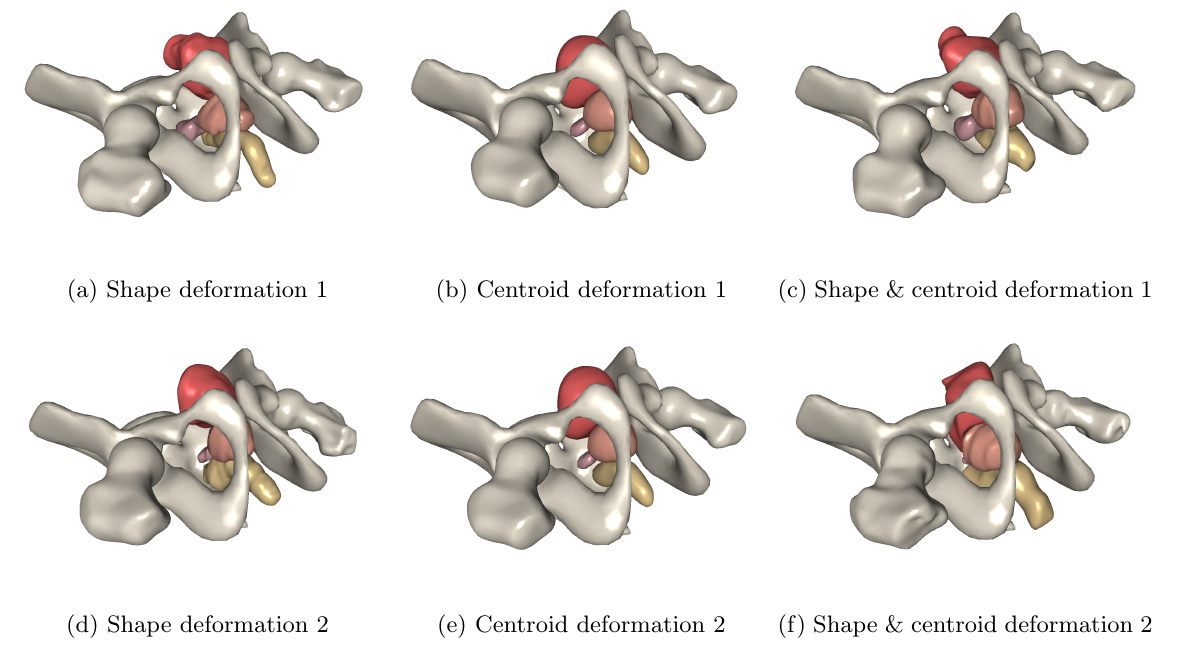It is widely known that the optimization of imaging systems based on objective, task-based measures of image quality via computer-simulation requires the use of a stochastic object model (SOM). However, the development of computationally tractable SOMs that can accurately model the statistical variations in human anatomy within a specified ensemble of patients remains a challenging task.
In this work, a novel and tractable methodology for learning a SOM and generating numerical phantoms from a set of volumetric training images is developed. The proposed methodology learns geometric attribute distributions (GAD) of human anatomic organs from a broad patient population, which characterize both centroid relationships between neighboring organs and anatomic shape similarity of individual organs among patients. By randomly sampling the learned centroid and shape GADs with the constraints of the respective principal attribute variations learned from the training data, an ensemble of stochastic objects can be created. The randomness in organ shape and position reflects the learned variability of human anatomy. To demonstrate the methodology, a SOM of an adult male pelvis is computed and examples of corresponding numerical phantoms are created.
Stochastic object model creation process
The proposed flowchart of the key steps in SOM creation process.
Results
By varying the weighting vectors, the organ shapes and inter-structural distances can be deformed. Organ models including prostate, bladder, rectum, femoral heads, pelvic bone, and seminal vesicles are displayed here, with the exception of the patient external surface for demonstration of internal organs.
Related publications
1. Steven Dolly, Yang Lou, Mark Anastasio, Hua Li*, “Learning-based Stochastic Object Models for Characterizing Anatomical Variations”, Physics in Medicine and Biology, 2018, Accepted.
2. Steven Dolly, Yang Lou, Mark Anastasio, Hua Li*, “Learning-based Stochastic Object Models for Use in Optimizing Imaging System“, Physics in Medicine and Biology, 2018, 63(6):065004. doi: 10.1088/1361-6560/aab000.

